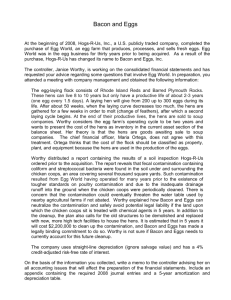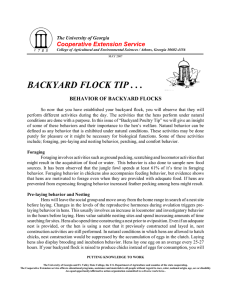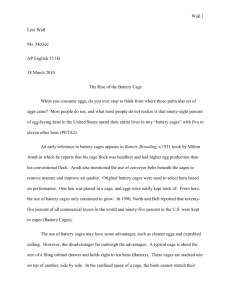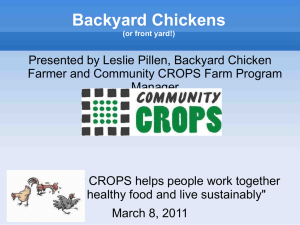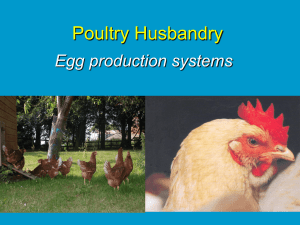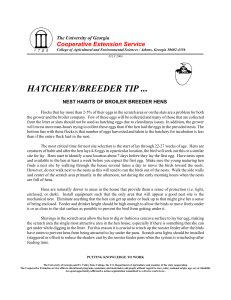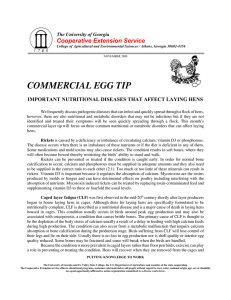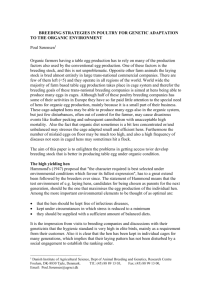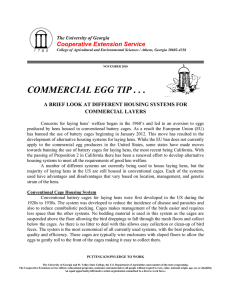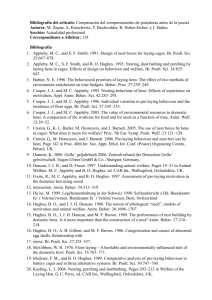First presentation given about egg production.
advertisement
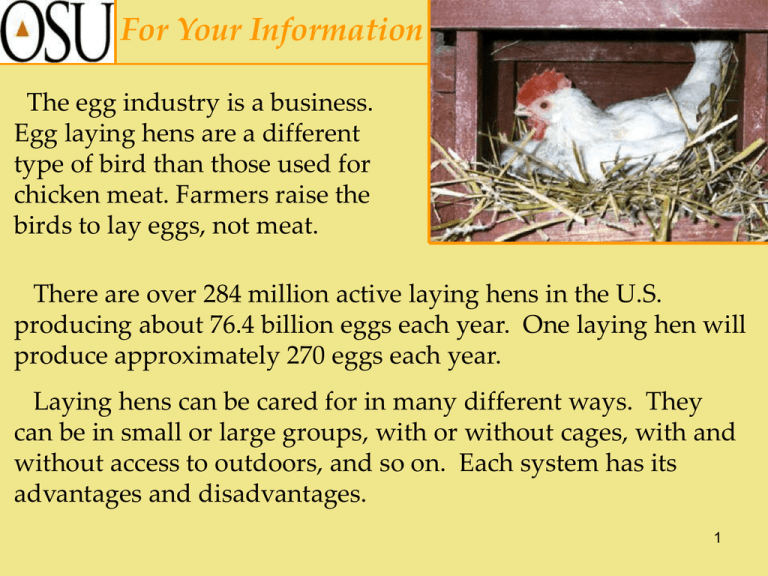
For Your Information The egg industry is a business. Egg laying hens are a different type of bird than those used for chicken meat. Farmers raise the birds to lay eggs, not meat. There are over 284 million active laying hens in the U.S. producing about 76.4 billion eggs each year. One laying hen will produce approximately 270 eggs each year. Laying hens can be cared for in many different ways. They can be in small or large groups, with or without cages, with and without access to outdoors, and so on. Each system has its advantages and disadvantages. 1 Today’s Activity • You will answer a series of survey questions. • Through these answers, you may voluntarily purchase one of the five egg products at the front of the room. • If a voluntary purchase is made, you may pay with cash, check, or any credit card. • Please answer all questions reflecting your true preferences, and how you would make purchasing decisions on a typical grocery store trip. 2 To help you answer the survey questions, we will briefly describe the egg production process and how the five egg products differ. 3 For Your Information Space Per Hen Whether caged or not, hens are more content with greater space. Greater space can be provided by…. 1) making cages larger 2) providing more perches & walkways 3) increasing floor space 4 For Your Information Floor Space Per Hen In addition to increasing hen’s space by adding perches and walkways… one can increase the amount of space on the barn floor for each hen. Note: for systems using cages, “space per hen” is relevant but “floor space” is not. 5 For Your Information Beak Trimming Hens sometimes peck at one another, causing injury and sometimes death. To reduce injuries from pecking, farmers sometimes trim the beak of birds. Beak trimming does cause pain. If the trimming occurs when the hen is younger than 10 days of age, the pain is only temporary. When trimmed at older than 10 days, chronic pain results. 6 For Your Information Scratching, Foraging, & Dustbathing Hens naturally like to scratch at dirt or bedding material, search for food on the ground, and dust off their body with dust and sand. Opportunities for these activities can be provided outside or inside a barn. 7 For Your Information Nest Availability Hens prefer to lay their eggs in individual nests, and prefer that nest to contain bedding material. Some farm systems do not provide nests, and the egg simply falls on the cage floor and rolls out the front of the cage to be collected by conveyor belt. Other farms provide nest boxes for the hens to lay eggs. Eggs will roll out the nest box and onto a conveyor belt to be collected. 8 For Your Information Free-Range: Access to Outdoors Hens will go outdoors to exercise and explore in good weather. Access to outdoors is made more attractive to the hens by providing shelter and protection from predators. 9 For Your Information Protection From Other Birds When hens are placed in large groups, they cannot establish a “pecking order” and will injure one another. Sometimes, bouts of injurious pecking and cannibalism can break out. Placing hens in small groups of six or less reduces hen aggression Providing perches for hens to flee bully hens also reduces aggression 10 For Your Information Type of Feed Laying hens eat mostly corn. The corn can be nonorganic or organic corn. Some hens can be given feed high in flaxseed to increase omega-3 fatty acid levels. Feed given to laying hens are never supplemented with antibiotics or growth hormones. 11
